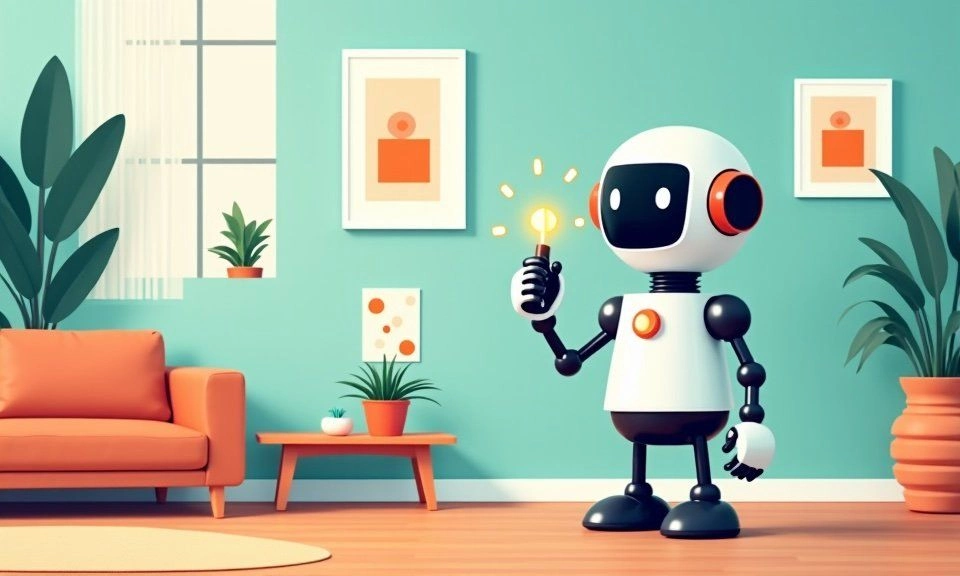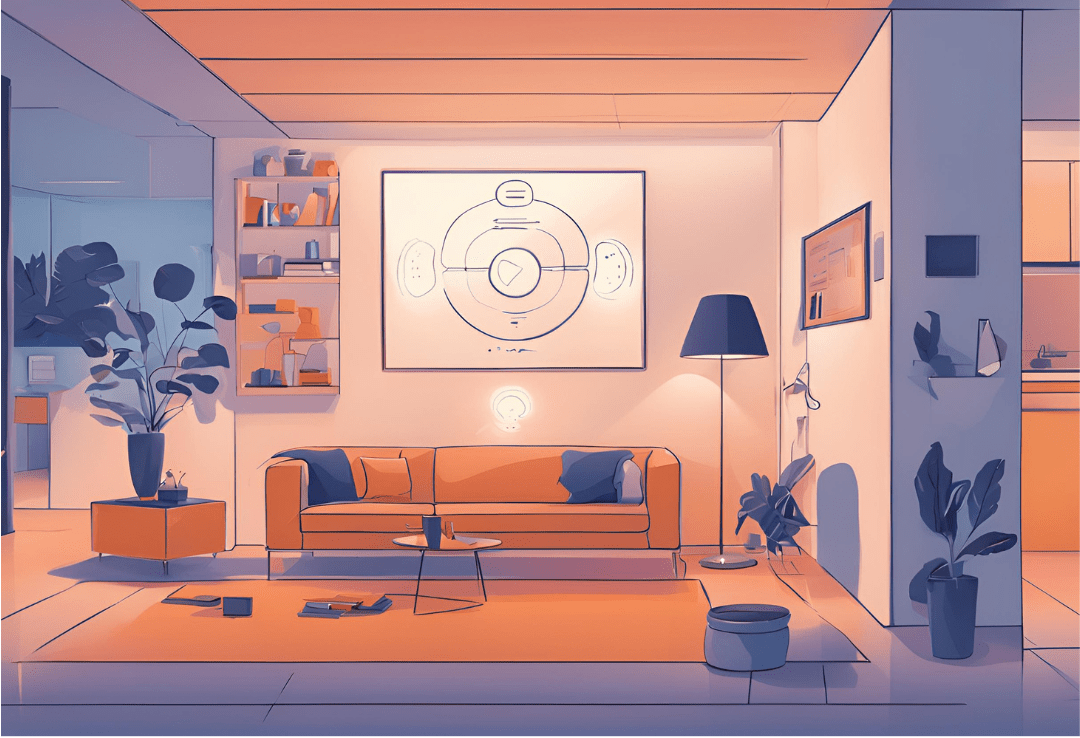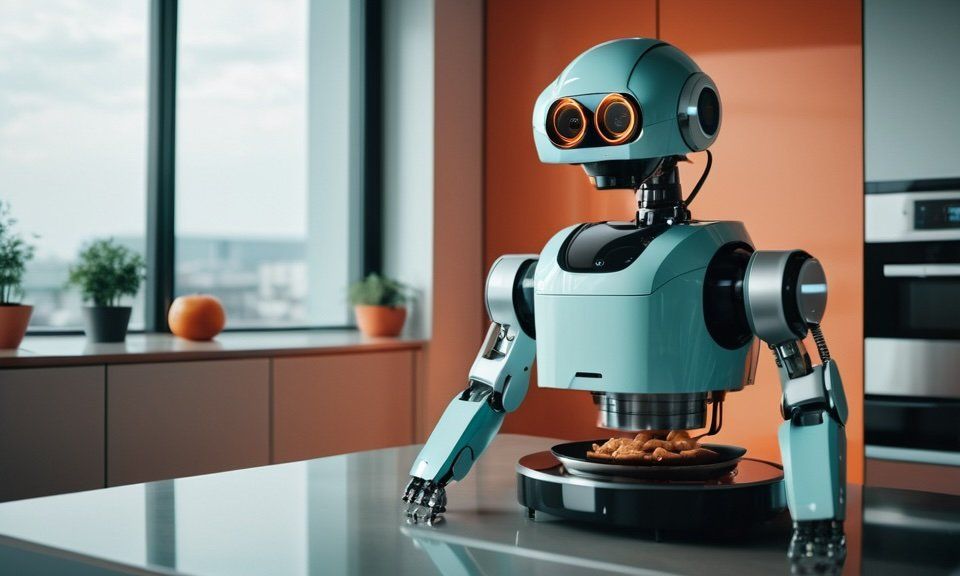Are Smart Home Devices AI?
It's easy to think the modern smart home must be full of AI—from lights that turn on automatically to voice assistants that know everything! But is it really AI?

Please note: This page may contain affiliate links. Read our ethics policy
Is your smart home actually “smart”, or just exceptionally well-programmed? Sometimes, it can feel like the modern smart home—full of voice assistants and clever sensors that automatically react to user behavior—is very much an “AI”. But is it really?
Defining AI in The Smart Home
AI, or Artificial Intelligence, broadly refers to systems that simulate human-like problem-solving, pattern recognition, and learning capabilities. But the definition is constantly changing: it used to be AI was anything that could fool a human into thinking it was chatting to another human (the “Turing Test”). But since a number of systems are now able to pass that, we had to move the goal posts. In the future, we’ll probably say AI has to be self-aware for it to be truly intelligent.
So let’s be clear about what we mean by AI in the context of a smart home—or rather, what AI isn’t.
Rule-based automation: Smart, but not really “learning”
A simple set of rules can give rise to behaviors that might seem smart, but these are really just pre-defined routines. For instance; smart lights that turn on at sunset, or a security camera that activates when motion is detected.
The more conditions and complexity we can create with these simple rules, the smarter the system appears to behave. But ultimately it’s just a series of “if this, then that” programmed rules.
Adaptive learning systems: Getting smarter, but not independent
More advanced algorithms exist in devices that can learn from user behavior to predict and automate without explicit instruction. Security cameras that can be trained to recognize individual users are an example of this, or thermostats that learn the household patterns to set the heating without being asked.
Your security camera might send a notification to ask you “This person was seen three times in the past month, do you want to add a name to track them?”

These adaptive systems notice patterns and adapt over time, but that’s programmed flexibility rather than independent thought.
Voice Assistants: As close as it gets
Here’s where it gets really tricky: While voice assistants seem like the smartest part of a modern smart home, many aren’t strictly AI. They’re just very good at Natural Language Processing. That means they recognize the patterns of words and how sentences are formed, and have been programmed to react in a certain way with specific keywords.
For instance, if Siri hears “turn on”, or “brightness”, it’ll assume you're talking about a smart home device. It'll fetch a list of your devices, and see if any names match the next words in your instruction, and whether that device has the ability to do the command you requested.
Matter Will Enable AI in The Smart Home
While it’s difficult to say our current smart home devices have “true” AI in the strictest of definitions, what is true is that the Matter protocol will be fundamental when it does finally arrive.
Matter is about interoperability and standardization—creating a single, unifying language that enables anything in your smart home to talk to anything else. That sounds like something that should always have been true, but it was a novel concept until recently.
For instance, you might think telling your smart bulb to turn on to full brightness is a simple. But how do you define brightness? A value in lumens, a percentage, or somewhere on a scale from 0 to 255. Matter defines this so that every bulb speaks the same language and understands the same commands. In fact, it does this for hundreds of different types of devices, and every version of Matter brings new devices into the fold.
Matter does more than connect devices; it creates a shared, reliable infrastructure. For AI to be useful in a smart home, that means streamlined access to every device’s data in real time, enabling the AI to detect patterns, anticipate needs, and offer proactive solutions.
What’s the Future of AI in the Smart Home?
While science fiction films and TV shows like Star Trek don’t predict the future, they arguably help shape it, and our modern smart home will be one of the first to benefit from Artificial Intelligence.
In the short term, I expect better Voice Assistants to control our home. This will start with handing off complex commands and requests from our existing Assistants to a ChatGPT-like cloud provider, similar to how Google Home and Siri offers to do a web search if it doesn’t know the answer. We already see this with direct integration of ChatGPT into the upcoming Apple Intelligence, though it’s a clunky interface that needs user approval to send the request.
As a next step, we will see fully autonomous AI agents that can control every aspect of our smart home and offer a human-like voice interface. The ship’s computer from Star Trek, or Samantha from Her, are not as far-flung as you might think.

Data privacy and security will become paramount as more smart home devices leverage AI. The Matter protocol enshrines local device control, which can reduce reliance on cloud storage for sensitive information, like user routines or biometric data. As AI becomes more integral to our lives, Matter-enabled homes could offer the most privacy-friendly environments for AI applications. While initial AI smart home agents will need to run in the cloud, later models will be more efficient and capable of running entirely locally on lower-powered hardware.
Not So Sci-Fi
At present, none of the current generation of smart devices are really "AI"—just very clever programming. But as Matter continues to connect every smart device in our homes, could we soon see the emergence of a fully autonomous AI assistant, adapting our homes perfectly to our needs, monitoring everything and practively taking action?
If you’ve had the chance to talk with the latest version of ChatGPT 4o Advanced Voice Mode, you’ll know that it’s already terrifyingly human-like, capable of reasoning and engaging conversations, as well as expressing emotions. All that’s missing is the connection to your smart home.
About the Author

James Bruce
Smart Home Contributor, Videographer, and Developer
James spent seven years in Japan, where he brought technology into the classroom as a teacher and worked part-time as a data centre engineer. Formerly the CTO and Reviews Editor of MakeUseOf, he has also contributed to publications like TrustedReviews, WindowsReport, and MacObserver. With a BSc in Artificial Intelligence, James combines his technical expertise with a passion for writing, programming, and tech reviews. Now based in Cornwall, he enjoys the slower pace of rural life, building LEGO, playing board games, and diving into VR.